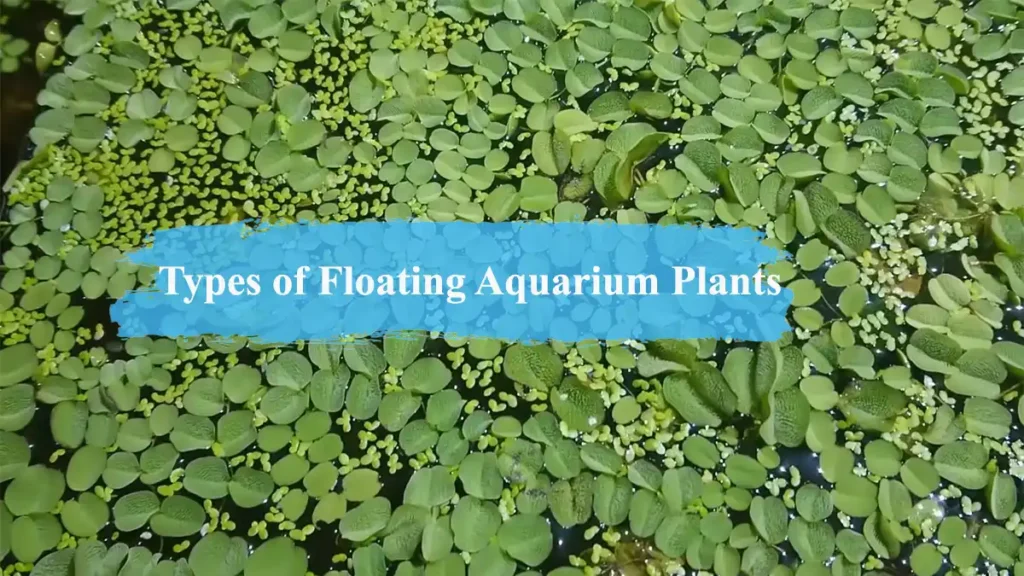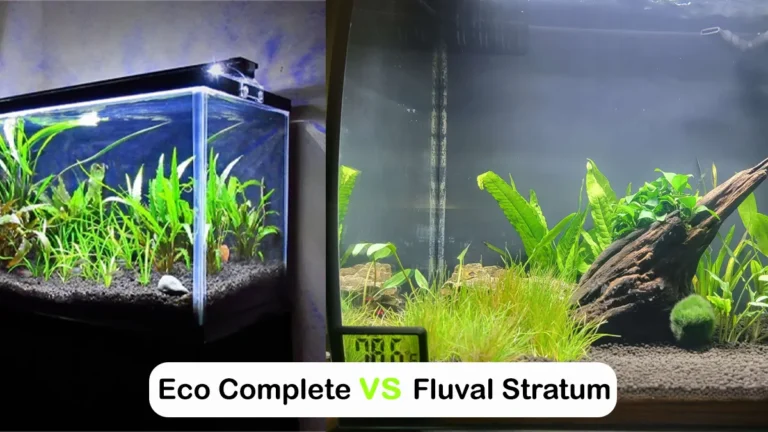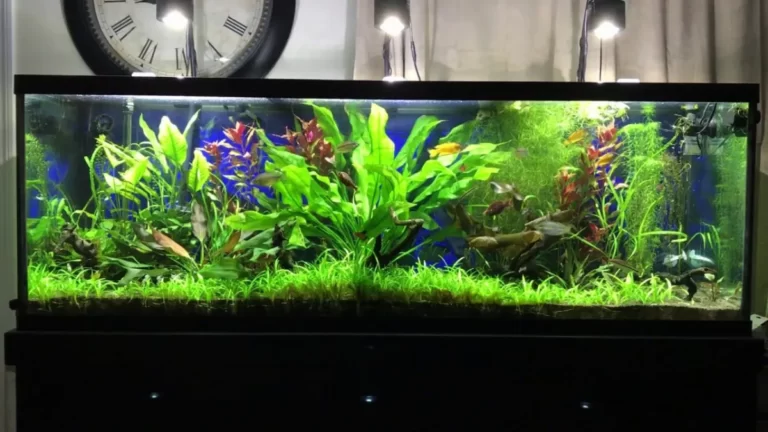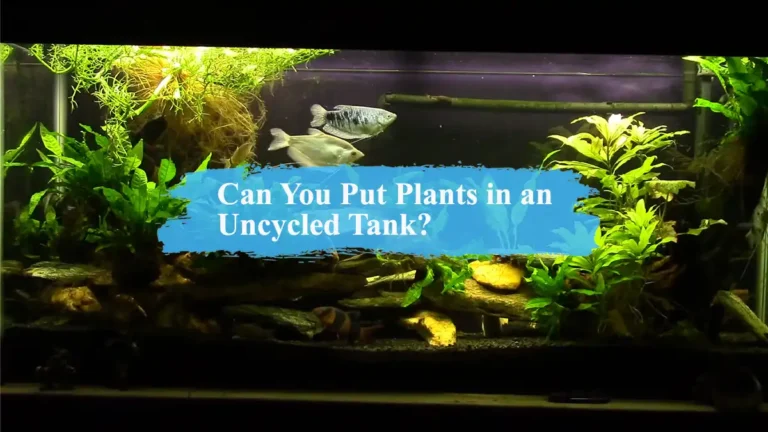Types of Floating Aquarium Plants: Know the Best Types
Hey there, fellow aquarium enthusiasts! Today, we’re diving deep into the world of floating aquarium plants. These magnificent aquatic wonders not only add a touch of natural beauty to your tank but also contribute to its overall health and balance.
So, grab your nets and get ready to explore the various types of floating plants that can turn your aquarium into a vibrant underwater paradise!

Types of Floating Aquarium Plants
Floating plants are a fantastic addition to any aquarium setup. They bring a sense of tranquility and create a visually captivating display as they gracefully float on the water’s surface. But why stop at just any floating plant when you can choose from an array of options?
Let’s take a closer look at some common types of floating aquarium plants that can elevate your aquatic experience.
Benefits of Floating Plants in Aquariums
Before we delve into the different types of floating plants, let’s talk about the amazing benefits they offer to your aquarium ecosystem. These benefits go beyond their visual appeal and have a positive impact on the overall health of your aquatic environment. Here are some advantages of incorporating floating plants into your tank:
- Oxygenation and Aeration: Floating plants play a crucial role in oxygenating the water. Through photosynthesis, they absorb carbon dioxide and release oxygen, ensuring a well-oxygenated environment for your aquatic friends. This is especially important during the day when oxygen levels tend to decrease.
- Natural Filtration: Floating plants act as natural filters by absorbing excess nutrients, such as nitrates and phosphates, from the water. This helps prevent nutrient imbalances that can lead to algae overgrowth. By reducing these nutrients, floating plants contribute to a healthier and cleaner aquatic ecosystem.
- Algae Control: Algae can be a common concern for aquarium owners. The good news is that floating plants can help combat algae growth. They compete with algae for nutrients and shade the water, limiting the amount of light available for algae to thrive. It’s like having your own green superhero squad fighting off the unwelcome invaders.
Now that we understand the numerous benefits of floating plants, let’s explore some common types that you can introduce to your aquatic sanctuary.
Related Post: The Ultimate Guide to Planting in an Uncycled Fish Tank
Common Types of Floating Aquarium Plants
Water Lettuce (Pistia stratiotes):
- Description and Appearance: Water Lettuce is a popular floating plant with a rosette-like arrangement of pale green leaves. Each leaf is covered in fine, velvety hairs, giving it a unique texture. The roots hang below the water’s surface, providing shelter and spawning sites for small aquatic creatures.
- Care Requirements: Water Lettuce thrives in moderate to high lighting conditions. It prefers warm water temperatures ranging from 72°F to 82°F (22°C – 28°C). Regular water circulation is essential to prevent stagnant conditions. This plant is relatively low-maintenance, making it a great choice for beginners.
- Recommended Tank Size: Water Lettuce can be suitable for tanks of various sizes, but it thrives best in larger aquariums where it has ample space to spread out.
Amazon Frogbit (Limnobium laevigatum):
- Description and Appearance: Amazon Frogbit features small, round leaves with a bright green coloration. The leaves have a unique indentation in the center, giving them a lily pad-like appearance. The long, delicate roots dangle below the surface, providing shade and hiding places for fish and other inhabitants.
- Care Requirements: Amazon Frogbit prefers moderate lighting conditions and thrives in a temperature range of 68°F to 82°F (20°C – 28°C). It can adapt to various water conditions but prefers neutral to slightly acidic pH levels. Regular pruning is necessary to prevent excessive growth and maintain a balanced aquarium.
- Recommended Tank Size: This plant can be suitable for tanks of various sizes, but it is especially well-suited for medium to larger aquariums.
Salvinia (Salvinia spp.):
- Description and Appearance: Salvinia is a floating fern with distinctive leaves that come in pairs. The upper leaves are small and rounded, while the lower leaves are longer and feathery. The fine, hair-like roots create a beautiful trailing effect underwater. Salvinia adds a touch of elegance to any aquarium setup.
- Care Requirements: Salvinia prefers moderate to high lighting and thrives in a temperature range of 68°F to 82°F (20°C – 28°C). It can tolerate a wide range of water conditions but requires stable water parameters. Pruning is necessary to prevent overgrowth and to maintain an aesthetically pleasing appearance.
- Recommended Tank Size: Salvinia can be suitable for tanks of various sizes, but it flourishes best in medium to larger aquariums.
Other Floating Plants to Consider
While the previous plants are popular choices, there are several other floating plants worth considering for your aquatic masterpiece. Here are a few additional options to expand your floating plant collection:
- Duckweed (Lemna spp.): Duckweed is one of the smallest floating plants, consisting of tiny green leaves. It reproduces rapidly and provides excellent shade for aquarium inhabitants.
- Water Spangles (Salvinia minima): Water Spangles have small, oval-shaped leaves that form clusters. They are known for their rapid growth and ability to provide shade to the aquarium.
- Floating Fern (Ceratopteris thalictroides): Floating Fern, also known as Water Sprite, has delicate, lacy leaves that create a beautiful, cascading effect underwater. It adds a touch of elegance to any tank.
Related Post: Floating Aquarium Plants with Long Roots: Detailed Information
Choosing the Right Floating Plants for Your Aquarium
Now that you’re familiar with different types of floating plants, it’s essential to choose the right ones for your specific aquarium setup. Consider the following factors when selecting floating plants:
- Lighting and Temperature Requirements: Different floating plants have varying lighting preferences, ranging from low to high intensity. Ensure that the plants you choose align with your aquarium’s lighting capabilities. Additionally, consider the temperature range in which the plants thrive to maintain a comfortable environment for them.
- Tank Size and Compatibility: Take into account the size of your aquarium when selecting floating plants. Some plants require more space to spread out and may overwhelm smaller tanks. Additionally, consider the compatibility of the plants with other inhabitants in your tank, such as fish and shrimp. Ensure that the plants and animals coexist harmoniously.
- Growth and Propagation: Understand the growth rate and propagation methods of the plants you choose. Some plants reproduce rapidly and may require more frequent pruning, while others have slower growth rates. Consider your time availability and maintenance preferences when making your selection.
FAQ (Frequently Asked Questions)
Are floating plants good for aquariums?
Absolutely! Floating plants offer several benefits to your aquarium, including oxygenation, natural filtration, and algae control. They enhance the overall health and beauty of your aquatic ecosystem.
Do floating plants require any special care?
Floating plants generally have low maintenance requirements. However, they do benefit from proper lighting, water temperature, and regular pruning to prevent overgrowth. Ensure stable water conditions and monitor their growth regularly.
Can floating plants be used in planted tanks?
Certainly! Floating plants can coexist with other submerged plants in a planted tank. They provide shade and help regulate nutrient levels, benefiting the overall health of the tank.
Conclusion
Incorporating floating plants into your aquarium is a surefire way to elevate its beauty and create a healthier environment for your aquatic companions. The various types of floating plants available offer unique features and benefits, ensuring a visually stunning and balanced underwater paradise.
Remember to choose plants that align with your aquarium’s lighting, temperature, and space requirements. Regular maintenance, such as pruning and monitoring growth, will help keep your floating plants thriving.
Related Post: Eco-Complete vs. Eco-Planted: Which One Should You Choose?





